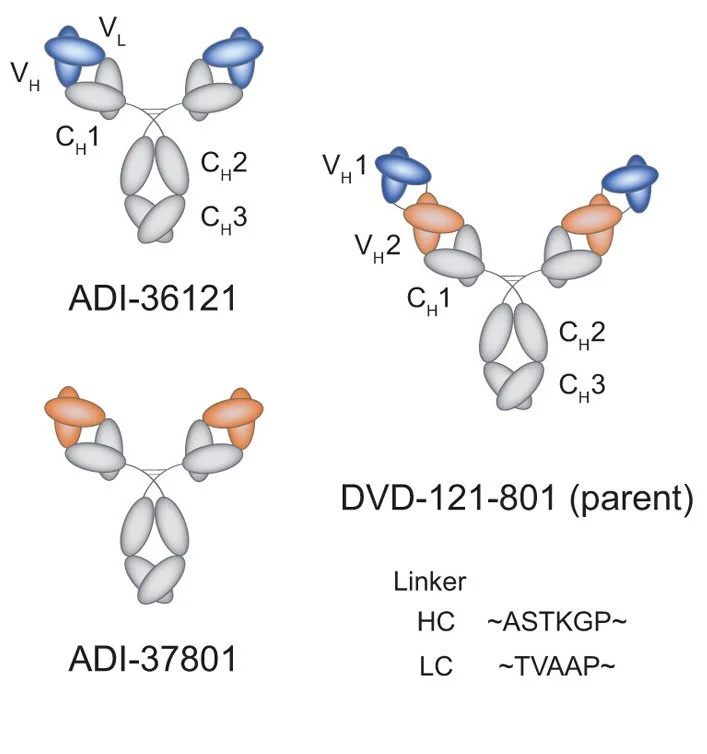ABSTRACT
Crimean-Congo hemorrhagic fever virus (CCHFV) is an enveloped, negative-sense RNA virus that is spread by ticks across Europe, Africa, and Asia and causes a lethal disease in humans (~30%-40% case fatality). There are currently no approved vaccines or therapeutics. Antibody-based therapeutics targeting the CCHFV surface glycoproteins Gn and Gc, which are responsible for viral attachment and fusion during entry, are a promising therapeutic approach. We previously isolated three broadly neutralizing Gc-targeting human monoclonal antibodies (mAbs) and showed certain cocktails of these mAbs demonstrated synergistic virus neutralization. Furthermore, physical linkage of two of these mAbs into a dual variable domain (DVD) bispecific antibody (bsAb) DVD-121-801 resulted in improved neutralization and therapeutic protection against a lethal CCHFV challenge in mice. However, the molecular requirements for the activity of DVD-121-801, and why it is augmented over monospecific parental mAbs, remain the topic of investigation. Here, we generated a new panel of bsAb variants of DVD-121-801 to explore the spacing and avidity requirements and further optimize its protective efficacy against divergent CCHFV isolates. We evaluated these variants for neutralization, fusion inhibition, and protection with virus-like particles, authentic viruses, and in vivo challenge studies. We found that neutralization potency was relatively unaffected by spacing or identity of variable domains within the bsAb, but that one next-generation design employing longer and more flexible linkers between variable domains (DVD-121-801GS) had a greater breadth of therapeutic protection. Our efforts highlight the importance of antibody avidity and lead to an improved bsAb variant of DVD-121-801 for further therapeutic development.
